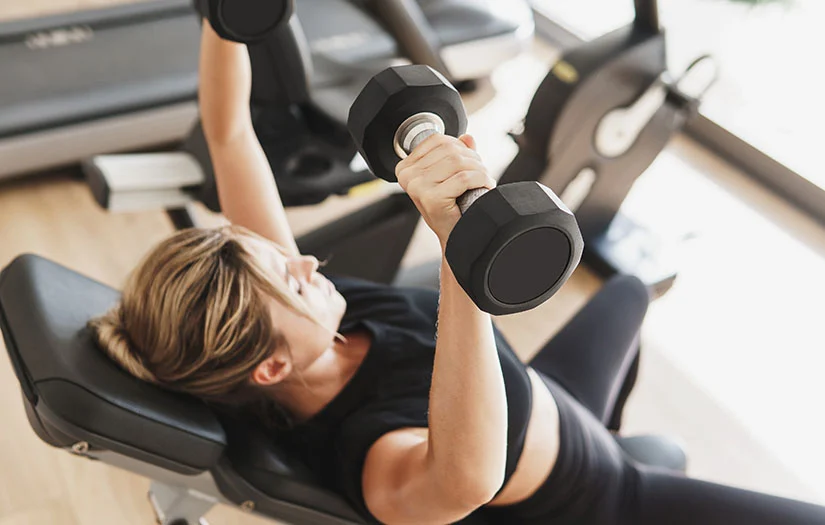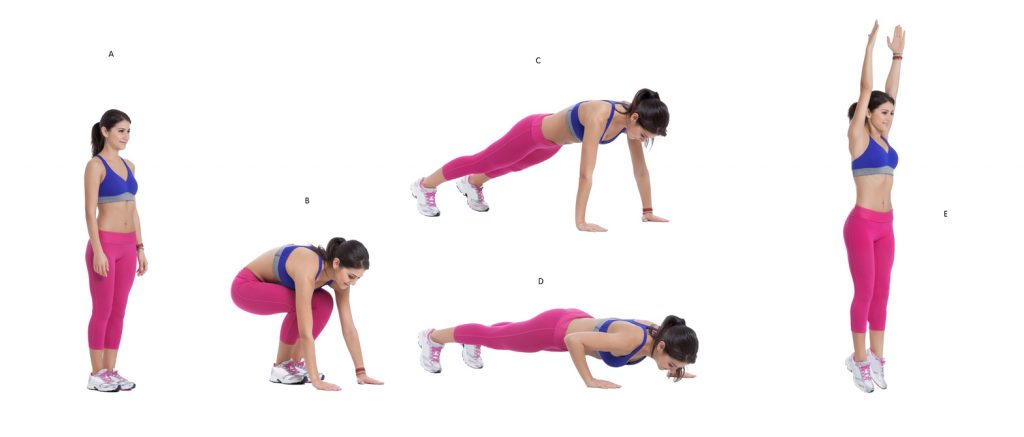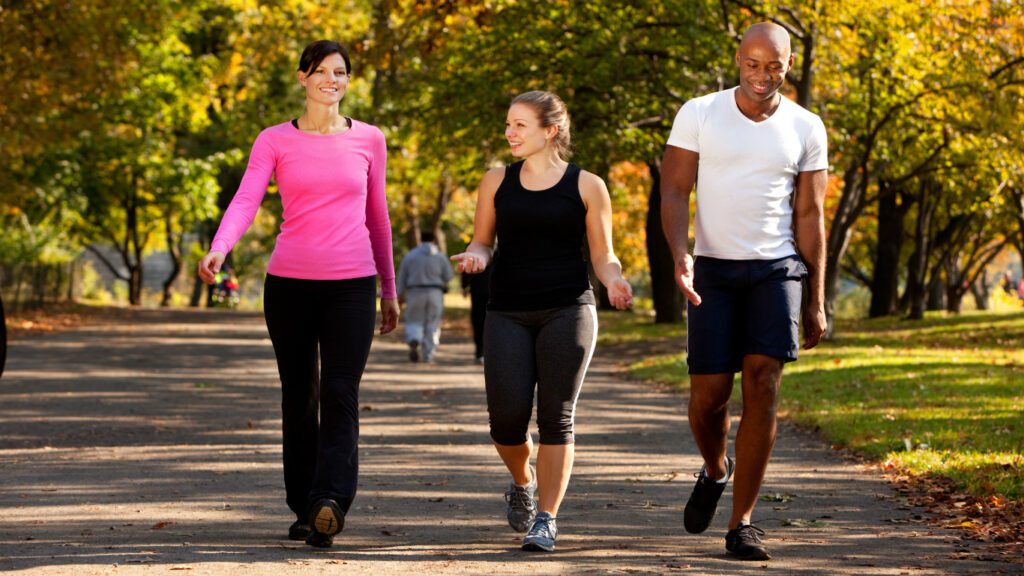Top 8 Best Execrise for Weight Loss
The Importance of Physical Activity for Shedding Pounds.
The key to losing weight is to create a calorie deficit, which means burning more calories than you consume. In addition to burning calories, engaging in regular physical activity enhances cardiovascular health, strengthens muscles, and elevates mood, facilitating adherence to your goals. From my personal experience of shedding 20 pounds, I discovered that integrating regular exercise with a well-balanced diet was the key to achieving long-lasting results.
The science behind physical activity and fat reduction.
When you engage in physical activity, your body utilizes stored fat as a source of energy, particularly during exercises that involve aerobic movements. Engaging in high-intensity workouts also activate the “afterburn effect,” where your metabolism remains elevated even after the workout, resulting in additional calorie burn. Research, such as a study published in the journal of strength & conditioning research, demonstrates that exercises that combine cardiovascular and strength training are most effective in reducing body fat while maintaining muscle mass.
What is the optimal amount of physical activity for your health?
According to the American College of Sports Medicine, it is recommended to engage in 150–300 minutes of moderate-intensity exercise per week to achieve weight loss. To achieve quicker outcomes, aim for a weekly workout duration of 225–420 minutes, incorporating both aerobic and resistance exercises. If you’re new to fitness, it’s best to start slow and focus on consistency rather than intensity.
Top 10 exercises for weight loss.
Check out this curated list of the top 10 exercises that can help you shed fat, build muscle, and keep you motivated. Each exercise is selected for its calorie-burning capacity, accessibility, and adaptability to different fitness levels.
1: HIIT (high-intensity interval training)

HIIT alternates short bursts of intense exercise with brief recovery periods, making it a time-efficient method for burning fat. A 20-minute high-intensity interval training (hiit) session can burn as many calories as a 40-minute continuous cardio workout. It’s ideal for individuals with packed schedules and helps maintain a high metabolic rate for an extended period.
How HIIT Training is Effective.
HIIT workouts elevate your heart rate to 60–90% of its maximum capacity, effectively burning calories and enhancing cardiovascular fitness. According to a study published in the British Journal of Sports Medicine, high-intensity interval training (hiit) was found to be just as effective as longer traditional workouts for burning fat. Personally, I have experienced the exhilarating sensation of a 15-minute high-intensity interval training (hiit) session—it is intense but highly rewarding.
Begin HIIT.
Give your body a quick HIIT workout: sprint for 30 seconds, then walk for 60 seconds, repeating this sequence for 15-20 minutes. You can perform this exercise on a treadmill, track, or even using bodyweight exercises such as burpees. Apps such as the pf app provide novice-friendly HIIT workouts.
Cons::
Time-saving:
Increases metabolic rate after exercise.
No apparatus required.
Pros::
Exertion of great force may not be suitable for novices.
Potential for strain if not executed correctly.
2: Running is a great way to improve your physical and mental health. It can help you burn calories,

strengthen your muscles, and boost your mood. Running can also reduce your risk of chronic diseases, such as diabetes, heart disease, and obesity. Running is a simple and effective way to stay fit and happy.
Running is a timeless calorie-torcher that is accessible to most people. A 154-pound individual running at a speed of 5 mph can burn approximately 295 calories within a 30-minute duration. Engaging in regular exercise is beneficial for reducing visceral fat, which is the unhealthy type associated with chronic illnesses.
Beginner’s Guide to Running
Begin with a 10-minute jog, progressively extending the duration or intensity over time. If running outside is challenging for your joints, consider opting for softer surfaces like grass or a treadmill with cushioning. I began jogging in the nearby park, and the invigorating breeze made each stride feel like a thrilling expedition.
Suggestions for Achievement
Wear quality footwear to avoid strain. To gradually increase your running endurance, follow a beginner running plan, such as the 5-week plan from tua saúde, which ensures a safe and steady progression. Stretch and relax before and after exercise to prevent injuries.
Calories expended (30 min, 154 lb individual):
Exercise:
Calories:
Jogging at a speed of 5 mph.
295:
Running (7.5 mph).
375:
3: Cycling is a low-impact exercise that can improve cardiovascular health, strengthen leg muscles, and enhance overall fitness. It is a sustainable mode of transportation that reduces carbon emissions and promotes a greener environment.

Riding a bike, whether outside or stationary, is a gentle exercise that burns 145–295 calories in 30 minutes for a person weighing 154 pounds, depending on their speed. It’s kind to the joints and enhances insulin sensitivity, lowering the risk of developing diseases.
What are the benefits of cycling?
Cycling activates numerous muscle groups, resulting in increased calorie expenditure and improved stamina. Indoor stationary bikes are excellent for fitness routines, whereas outdoor cycling provides a picturesque backdrop. I find cycling along my city’s designated bike paths to be both calming and efficient.
How to make it enjoyable.
Consider joining a spin class or utilizing a bike-sharing service to add variety to your exercise routine. To boost intensity, incorporate hill rides or interval sprints into your workout routine, alternating between 30 seconds of intense effort and 1–2 minutes of slower recovery. Discover cycling workouts on the start today app, which offers guided sessions to help you get started.
Cons::
Low impact, joint-friendly.
Suitable for beginners and experts alike.
Can be performed inside or outside.
Pros::
Requires a bike or gym access.
Less efficient at lower intensities.
4: Swimming:

Swimming is a comprehensive exercise that provides a low-impact workout, burning approximately 180–266 calories in 30 minutes for an individual weighing 154 pounds, depending on the stroke. It’s particularly beneficial for individuals with joint problems and simultaneously strengthens muscles while enhancing cardiovascular health.
Swimming is a unique form of exercise.
A 12-week research study demonstrated that swimming three times a week led to a decrease in body fat and cholesterol levels among middle-aged women. The breaststroke is the most calorie-burning swimming style, followed by butterfly and backstroke. I discovered that swimming laps provided a refreshing break from the monotony of the gym.
Beginning:
Begin with 20-minute sessions, concentrating on technique. Join a nearby pool or YMCA for cost-effective access. Online platforms such as swimoutlet provide gear suggestions for novices.
Stroke comparison (calories burned, 30 min, 154 lb):
Aphasia:
Calories:
Breaststroke:
266:
Freestyle:
180:
5: Jump rope.

Engaging in jumping rope is an intense, portable exercise that can burn up to 495 calories in just 30 minutes for someone weighing 154 pounds. It enhances synchronization, fortifies gastrocnemius, and elevates circulatory efficiency.
My rope adventure.
I acquired a jump rope during a hectic work period when I had limited time for gym sessions. Ten minutes of jumping rope left me winded but invigorated. It has become a regular part of my home workouts, particularly when I incorporate a weighted rope to enhance the engagement of my arm muscles.
Jumping rope efficiently.
Begin with 20-second intervals of exercise, followed by 10-second breaks, for a total of 10 minutes. Accelerate gradually or attempt maneuvers such as double-unders. Visit pullup & dip for cost-effective jump ropes.
Cons::
Compact and mobile.
Burning a large amount of calories.
Enhances synchronization.
Pros::
Significant effect on the musculoskeletal system.
Needs repetition for beat.
6: Resistance training.

Engaging in strength training exercises helps build muscle, which in turn boosts your resting metabolic rate (rmr), enabling you to burn more calories even when you’re not actively exercising. A one-hour workout session can burn between 300 and 500 calories, depending on the level of intensity.
The Importance of Muscle
Muscle tissue has a higher calorie-burning capacity compared to fat, even when you’re not engaging in physical activity. According to a recent study in sports medicine, engaging in strength training while losing weight helps maintain lean body mass, unlike solely focusing on calorie restriction.
Sample strength routine.
Attempt a dumbbell circuit: Perform 10 squats, 10 rows per arm, and 10 push-ups, repeating the circuit for three sets. Rest for 1–2 minutes between rounds. I began my fitness journey with bodyweight exercises, and the improvements were evident within a few weeks.
Cons::
Enhances metabolic rate over time.
Strengthen muscles.
Reduces muscle atrophy.
Pros::
Requires apparatus or fitness center.
Acquiring Skill for Correct Posture.
7: Burpees:

Burpees are a comprehensive exercise that engages the entire body, combining cardiovascular and muscular strength, resulting in a calorie burn of approximately 10–15 calories per minute. They engage multiple muscle groups and significantly elevate your heart rate.
Why burpees are challenging but beneficial.
According to a study conducted by the American College of Sports Medicine, performing 10 burpees at a fast pace can provide the same metabolic benefits as a 30-second bike sprint. Initially, I despised burpees, but they eventually became a mixed bag of love and hate for my quick exercise routines.
Steps to Perform a Burpee
Stand, squat, place hands on the floor, jump back to a plank position, perform a push-up (optional), jump feet forward, and leap up. Repeat for 10–15 reps, three sets. Watch instructional videos on youtube for correct technique.
Cons::
No apparatus required.
Full-body exercise.
A significant amount of calories were burned.
Pros::
Challenging for novices.
Significant effect on the musculoskeletal system.
8: Walking is a simple and effective way to improve your health and well-being.

Walking is a gentle, accessible exercise that can be done by beginners and burns approximately 114–146 calories in 30 minutes for someone weighing 154 pounds. It’s effortless to incorporate into daily routines and leads to a gradual reduction in body fat over time.
Walking for weight loss.
A 12-week study demonstrated that walking for 50–70 minutes, three times a week, resulted in a 1.5% decrease in body fat among women with obesity. I began taking 10,000 steps every day during my lunch breaks, and it contributed to a 5-pound weight loss within two months.
Suggestions to Increase the Efficiency of Walking.
Aim for 10,000–15,000 steps daily, using a fitness tracker. Incorporate inclines or a weighted vest for increased difficulty. Harvard health recommends wearing appropriate footwear and maintaining good posture to achieve the best outcomes.
Cons::
Free and open.
Minimal effect.
Easy to maintain.
Pros::
Reduced energy expenditure.
This task requires more time.
Contrasting Cardio vs. Weightlifting for Fat Reduction.
The type of exercise.
Calorie expenditure (30 min).
Advantages:
Negative Aspects.
Cardio (e.g., running, cycling).
145–495:
Running is an efficient way to burn calories and enhance cardiovascular health.
Can be significant, may not increase muscle mass.
Resistance training.
150–250:
Boosts r2, maintains muscle.
Reduced energy expenditure, necessitates apparatus.
A combination of both is the best option. Cardio exercises help burn calories during the workout, while strength training increases metabolism in the long run. Aim to have 3–4 cardio workouts and 2–3 strength training sessions each week.
